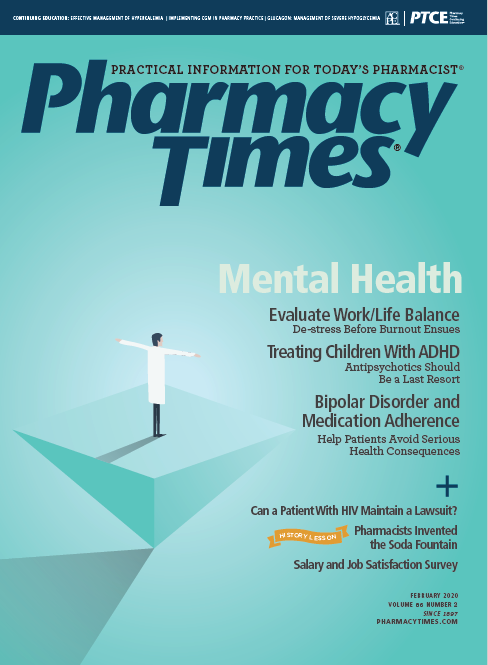Interactives: Case Studies (February 2020)
Using metformin for type 1 diabetes and handling eye irritation—how would you respond to these cases?
CASE 1
SB is a 48-year-old man with obesity who has a prescription for metformin from his provider. SB appears confused. He just read online that metformin is for the treatment of type 2 diabetes, but he has had type 1 diabetes (T1D) since age 6. A review of his profile shows that SB takes 80 units of Lantus once daily and 20 units of Humalog 20 minutes before each meal. He says that his glycated hemoglobin (A1C) levels were 8.3% at today’s office visit, down from 8.7% 3 months earlier. SB questions whether his provider made a mistake or if metformin can ever be used in patients with T1D. What should the pharmacist tell SB?
A: There is evidence to support the use of metformin in adolescents and adults with T1D who exhibit features of insulin resistance, such as being obese or overweight or having high insulin requirements. This is sometimes referred to as double diabetes. These patients often have difficulty achieving glycemic goals with insulin alone. Although metformin is not FDA approved for the management of T1D, its mechanism of improving insulin sensitivity could be of benefit. A 2018 meta-analysis of 13 randomized controlled trials found that metformin use in patients with T1D is associated with significantly lower body mass index, insulin requirements, and low-density lipoprotein cholesterol.1 It did not, however, improve glycemic markers such as A1C levels. Advise SB that metformin may be approved for off-label use for some patients with T1D.
CASE 2
JT, a 67-year-old man, has an eye irritation. He mentions that he recently received a diagnosis of open-angle glaucoma. JT’s ophthalmologist prescribed betaxolol 0.5% solution and instructed him to instill 1 drop in his right eye twice a day. JT started using the drops 2 days ago. Shortly after each dose, he experienced some bothersome stinging in his eye. JT wants to know what he can do to minimize the irritation. How should the pharmacist respond?A: Many conventional eye drops can cause irritation or stinging upon administration. When patients complain of such adverse effects, pharmacists should verify that the administration technique is correct, as incorrect use and/or overuse may be the culprit. Pharmacists can also check to see if products contain preservatives. Although preservatives are commonly added to eye drops to reduce product contamination, they can irritate conjunctival and corneal cells, causing inflammation and redness. Preservative-free formulas are generally better tolerated and can be recommended. When appropriate, pharmacists can also recommend ingredients with lower concentrations, such as betaxolol 0.25% solution or ingredients that are administered once daily, to reduce overall drug exposure to the eye.
Stefanie C. Nigro, PharmD, BCACP, CDE, is an associate clinical professor at the University of Connecticut in Storrs.
REFERENCE
Meng H, Zhang A, Liang Y, Hao J, Zhang X, Lu J. Effect of metformin on glycaemic control in patients with type 1 diabetes: A meta-analysis of randomized controlled trials. Diabetes Metab Res Rev. 2018;34(4):e2983. doi: 10.1002/dmrr.2983.

